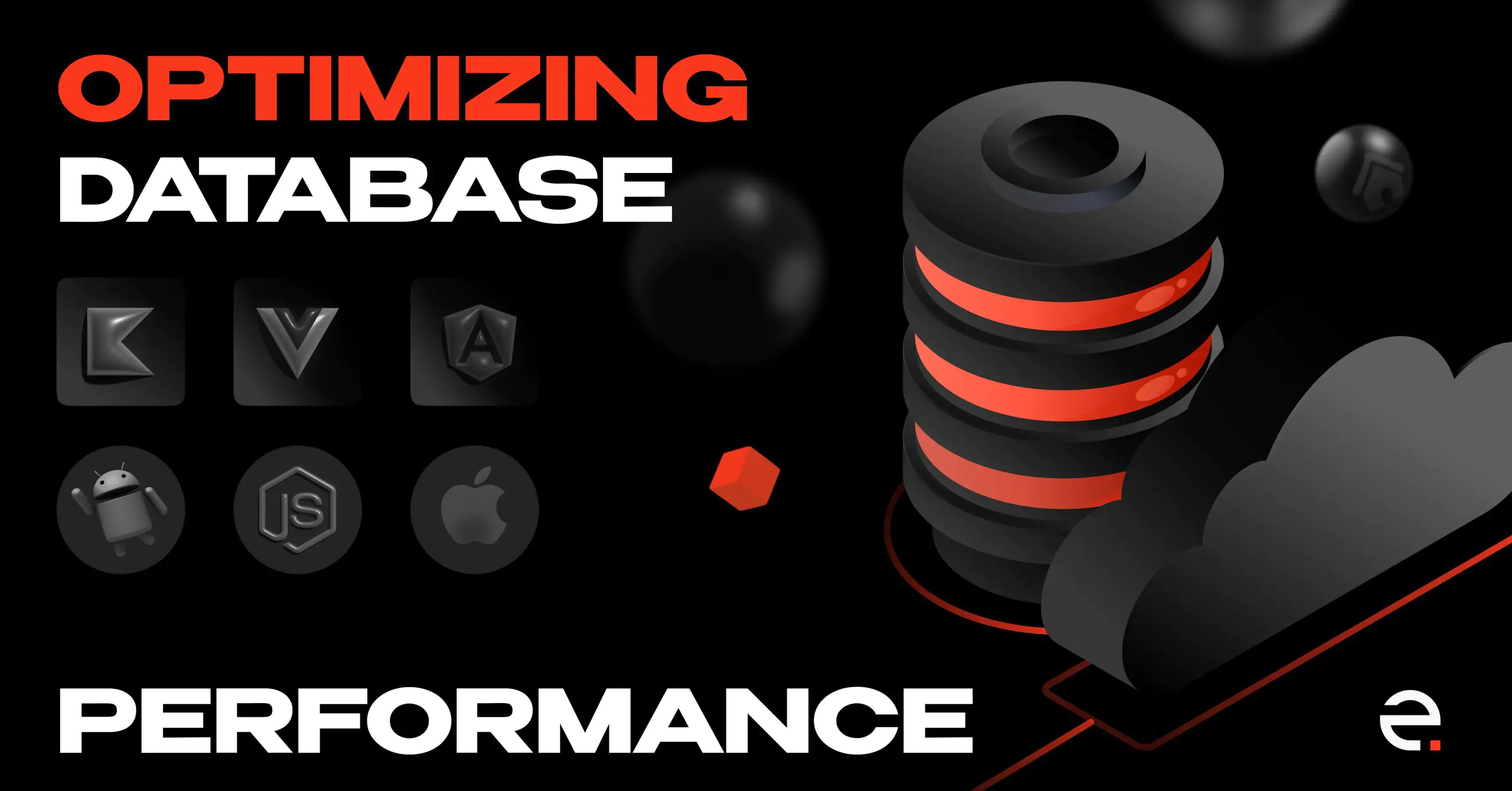Optimizing Database Performance in Full Stack Applications

Optimizing Database Performance in Full Stack Applications
Database performance is often the most critical factor affecting the overall speed and responsiveness of full-stack applications. As applications scale and data grows, even well-designed systems can begin to slow down without proper optimization. This article explores practical strategies for optimizing database performance in full-stack applications.
Understanding Database Performance Bottlenecks
Before implementing optimizations, it's essential to identify where performance issues originate:
1. Query Inefficiency
Poorly written queries are often the primary culprit in database performance issues:
- N+1 Query Problem: Making separate database queries for each item in a collection
- Missing Indexes: Forcing the database to scan entire tables
- Over-fetching: Retrieving more data than needed
- Complex Joins: Joining too many tables in a single query
2. Schema Design Issues
How you structure your data significantly impacts performance:
- Poor Normalization: Either over-normalized or under-normalized schemas
- Improper Data Types: Using inefficient data types for columns
- Missing Constraints: Lack of proper constraints leading to data integrity issues
3. Connection Management
How your application connects to the database matters:
- Connection Pooling Issues: Not properly managing database connections
- Resource Contention: Too many concurrent connections
Optimization Strategies
1. Query Optimization
Use Proper Indexing
Indexes are crucial for query performance:
-- Adding an index to a frequently queried column CREATE INDEX idx_user_email ON users(email); -- Composite index for queries that filter on multiple columns CREATE INDEX idx_product_category_price ON products(category_id, price);
Optimize SELECT Statements
Only retrieve what you need:
-- Instead of SELECT * SELECT id, name, email FROM users WHERE status = 'active';
Use EXPLAIN to Analyze Queries
Understand how your database executes queries:
EXPLAIN SELECT * FROM orders WHERE customer_id = 123;
2. Database Schema Optimization
Proper Normalization
Balance between normalization and denormalization:
- Normalize to reduce redundancy
- Strategically denormalize for read-heavy operations
Choose Appropriate Data Types
Use the most efficient data type for each column:
-- Instead of VARCHAR(255) for short codes CREATE TABLE countries ( id INT PRIMARY KEY, code CHAR(2), -- More efficient for fixed-length country codes name VARCHAR(100) );
Implement Partitioning for Large Tables
Split large tables into smaller, more manageable chunks:
-- Example of range partitioning in PostgreSQL CREATE TABLE orders ( id SERIAL, order_date DATE, amount DECIMAL(10,2) ) PARTITION BY RANGE (order_date); CREATE TABLE orders_2023 PARTITION OF orders FOR VALUES FROM ('2023-01-01') TO ('2024-01-01'); CREATE TABLE orders_2024 PARTITION OF orders FOR VALUES FROM ('2024-01-01') TO ('2025-01-01');
3. Caching Strategies
Implement Result Caching
Cache query results to reduce database load:
// Example using Redis with Node.js const redisClient = { get: async (key: string) => { // Mock implementation return null; }, set: async (key: string, value: string, option1: string, option2: number) => { // Mock implementation }, }; const db = { query: async (queryText: string, values: any[]) => { // Mock implementation return [{ id: 1, name: 'Product 1' }]; }, }; async function getProductDetails(productId: number) { // Try to get from cache first const cachedProduct = await redisClient.get(`product:${productId}`); if (cachedProduct) { return JSON.parse(cachedProduct); } // If not in cache, get from database const product = await db.query('SELECT * FROM products WHERE id = $1', [productId]); // Store in cache for future requests (expire after 1 hour) await redisClient.set( `product:${productId}`, JSON.stringify(product), 'EX', 3600 ); return product; }
Use Query Caching
Many databases offer built-in query caching:
-- MySQL query cache hint SELECT SQL_CACHE * FROM frequently_accessed_table WHERE updated_at > DATE_SUB(NOW(), INTERVAL 1 DAY);
4. Connection Pooling
Efficiently manage database connections:
// Example using Node.js with pg-pool const { Pool } = require('pg'); const pool = new Pool({ host: 'localhost', database: 'myapp', user: 'dbuser', password: 'password', max: 20, // Maximum number of clients in the pool idleTimeoutMillis: 30000, // Close idle clients after 30 seconds connectionTimeoutMillis: 2000, // Return an error after 2 seconds if connection not established }); async function queryDatabase() { const client = await pool.connect(); try { const result = await client.query('SELECT * FROM users WHERE active = true'); return result.rows; } finally { client.release(); // Return client to pool } }
5. Database-Specific Optimizations
MongoDB
For document databases like MongoDB:
- Use proper indexing including compound and text indexes
- Structure documents to match query patterns
- Use projection to limit returned fields
- Consider embedding vs. referencing based on access patterns
// Creating a compound index in MongoDB db.orders.createIndex({ customer_id: 1, order_date: -1 }); // Using projection to limit returned fields db.products.find({ category: "electronics" }, { name: 1, price: 1, _id: 0 });
PostgreSQL
For PostgreSQL databases:
- Use JSONB for flexible schema needs
- Implement proper VACUUM settings
- Use materialized views for complex reporting queries
-- Creating a materialized view in PostgreSQL CREATE MATERIALIZED VIEW product_sales_summary AS SELECT p.category, SUM(oi.quantity) as total_sold, SUM(oi.quantity * oi.price) as revenue FROM order_items oi JOIN products p ON p.id = oi.product_id GROUP BY p.category; -- Refreshing the materialized view REFRESH MATERIALIZED VIEW product_sales_summary;
Monitoring and Continuous Optimization
1. Set Up Monitoring
Implement tools to track database performance:
- Query Performance: Monitor slow queries
- Resource Usage: Track CPU, memory, and disk I/O
- Connection Metrics: Monitor active connections and pool usage
2. Implement Performance Testing
Regularly test database performance:
- Load testing to simulate high traffic
- Benchmark critical queries
- Test with realistic data volumes
3. Regular Maintenance
Schedule routine maintenance tasks:
- Index rebuilding
- Statistics updates
- Database vacuuming (for PostgreSQL)
Conclusion
Optimizing database performance is an ongoing process that requires attention to query patterns, schema design, and resource management. By implementing the strategies outlined in this article, you can significantly improve the performance and scalability of your full-stack applications.
Remember that optimization should be data-driven—always measure performance before and after changes to ensure your optimizations are having the desired effect. Sometimes, the simplest changes can yield the most significant improvements.